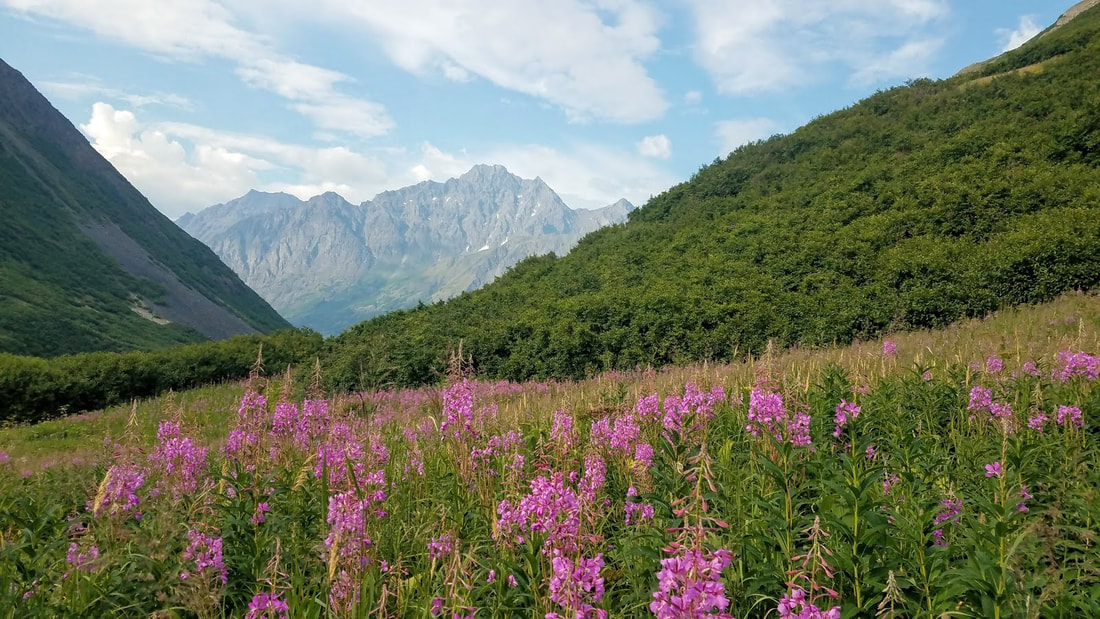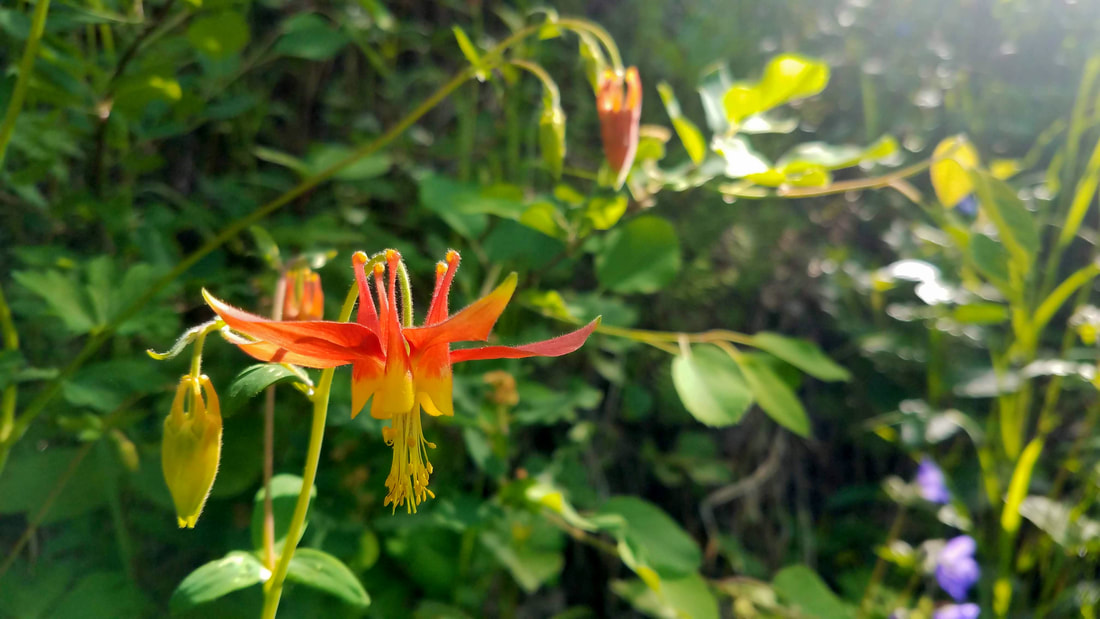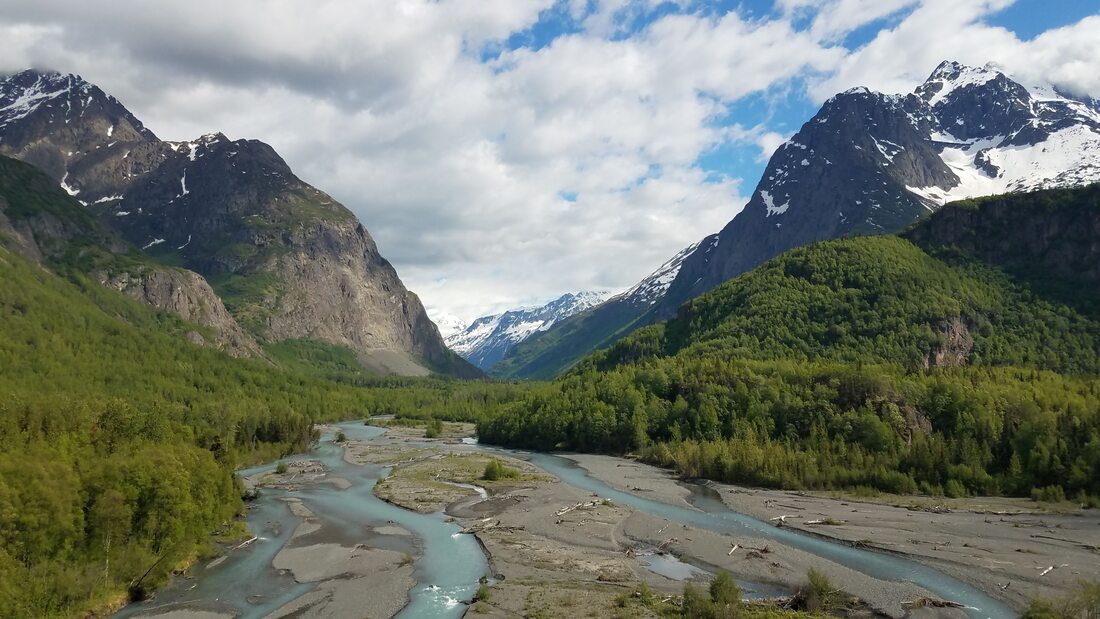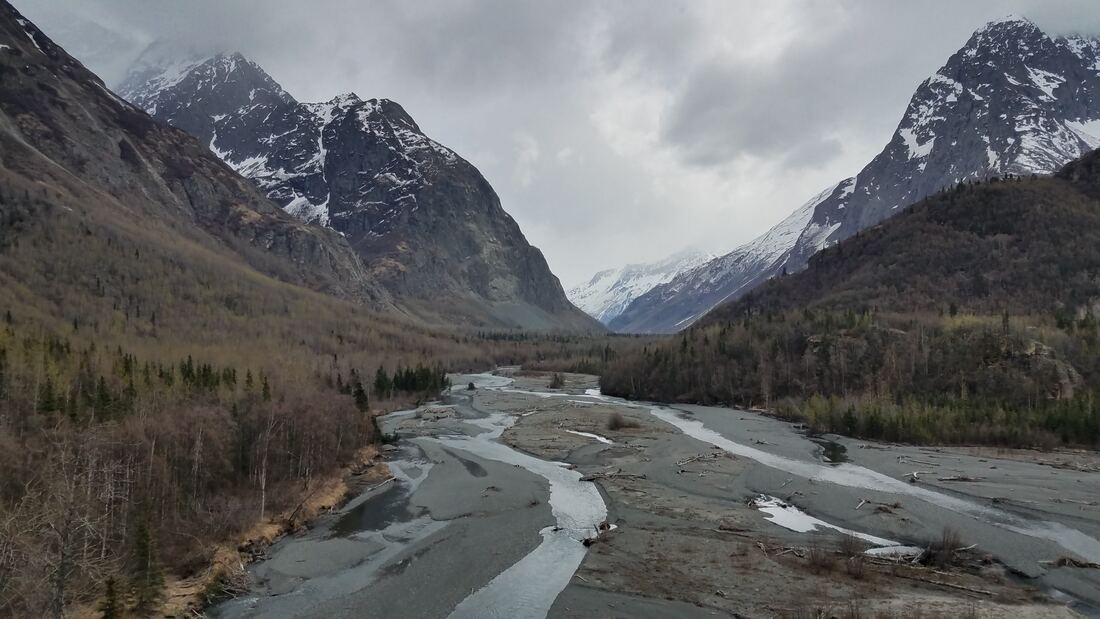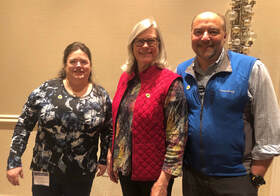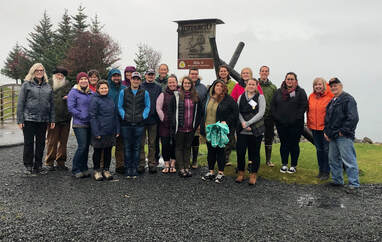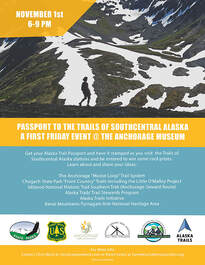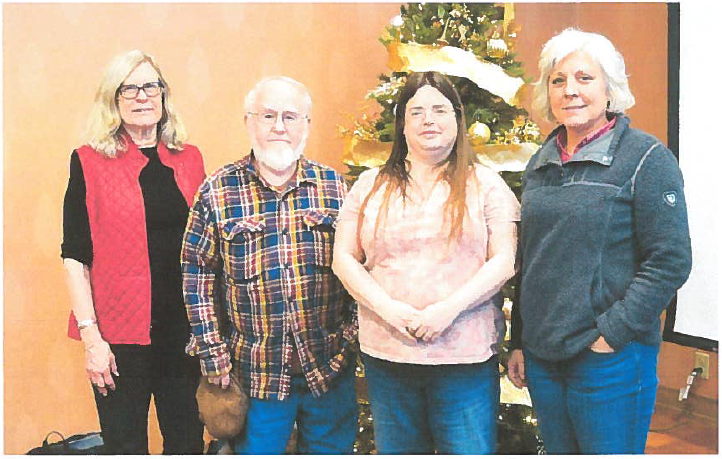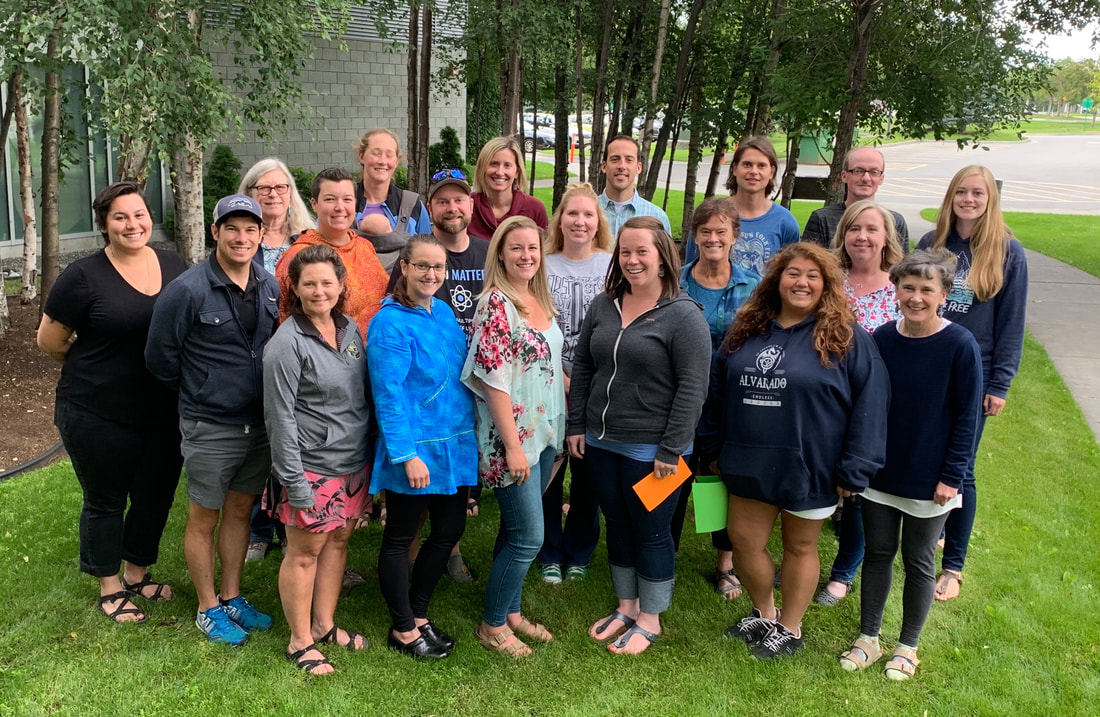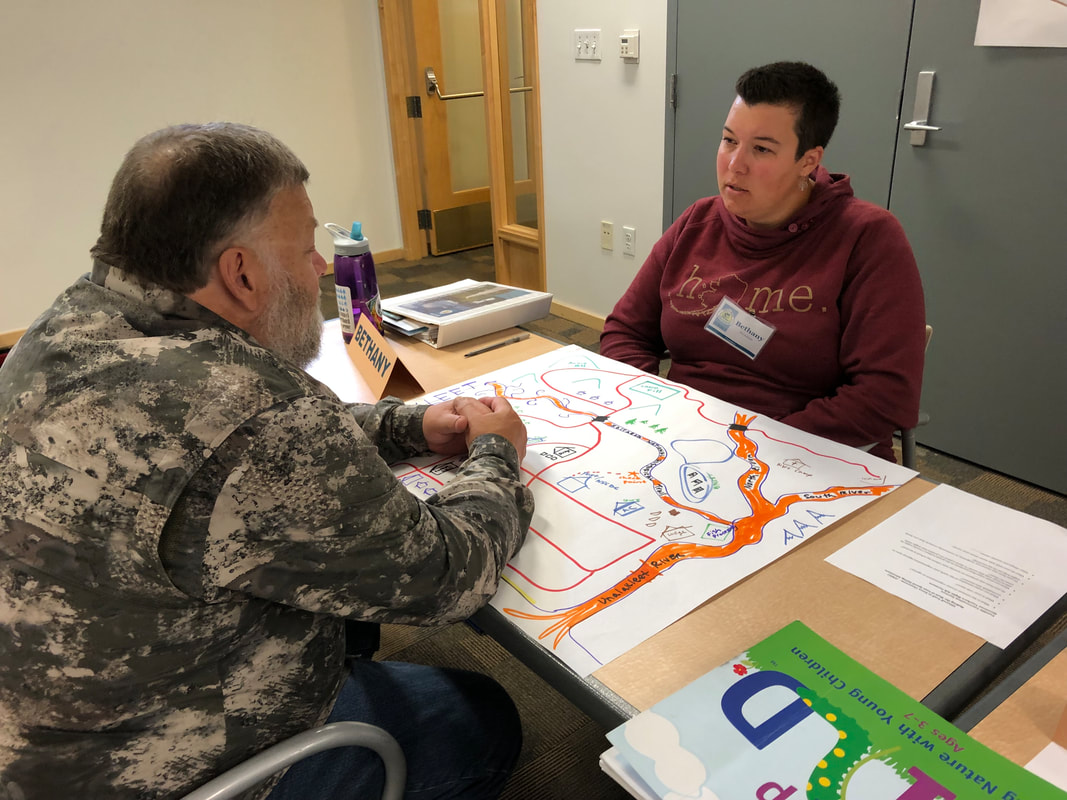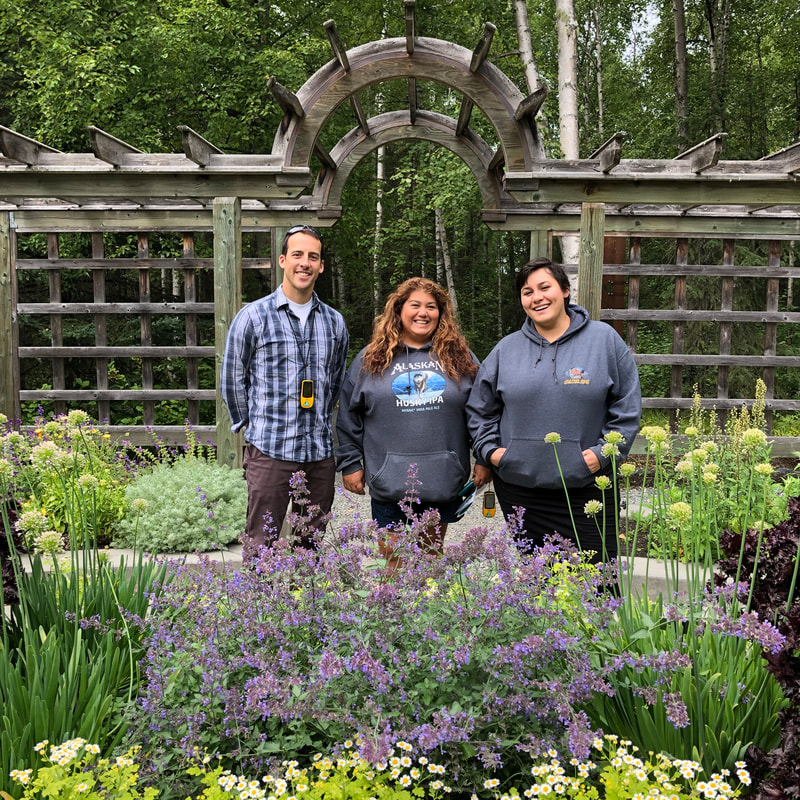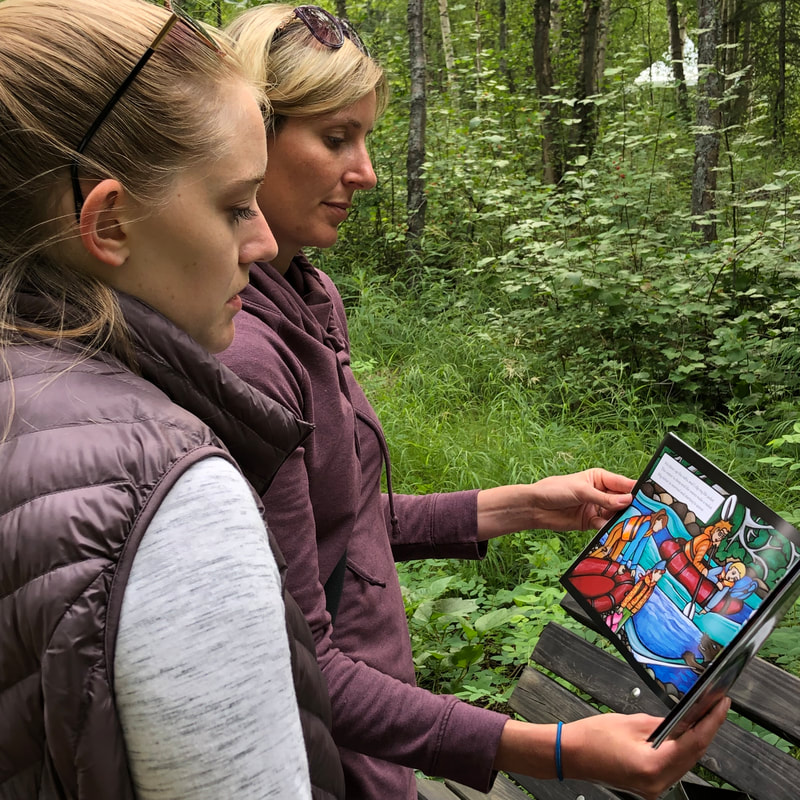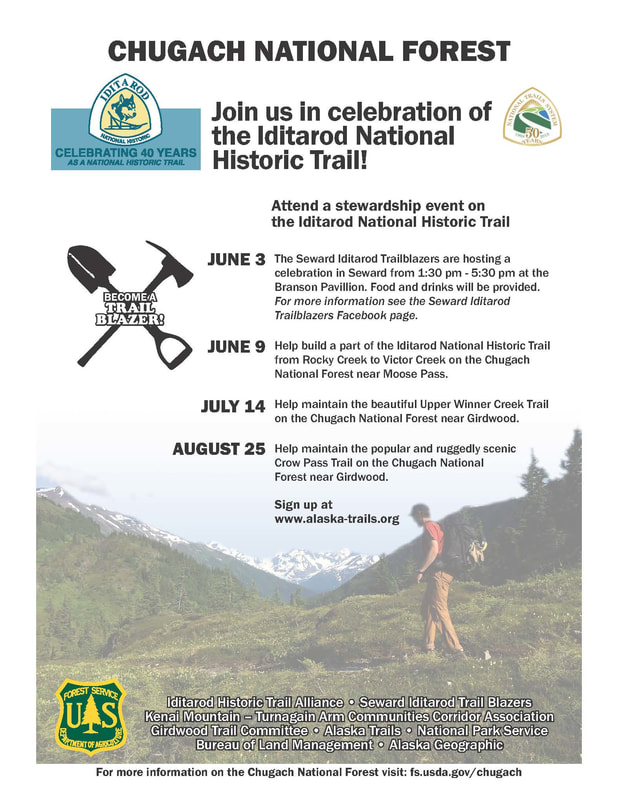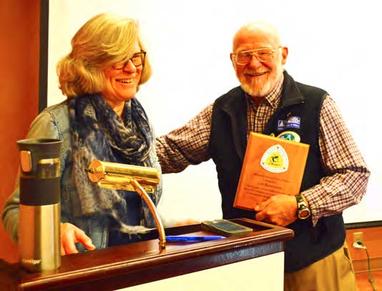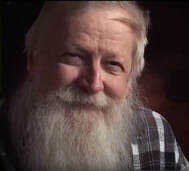 Lee E. Poleske 1937-2023
Lee E. Poleske 1937-2023 Dear Friends,
We are saddened with the passing of a dear friend, Lee Poleske. A longtime member of the Board of Directors, Lee produced the monthly newsletter Tripod for the Iditarod Historic Trail Alliance. This month, Lee is the story. He will be greatly missed.
Even a casual observer noticed the walker with a flowing white beard, camera in hand, or a tote full of groceries as he strolled downtown, along the historic Iditarod trail aka Waterfront bike path, through the harbor, to Safeway, or even beyond to Mile 7, always refusing a ride no matter what the weather or season. Nicknamed Father Time or Santa Claus, this friendly, rosy- cheeked man with sparkling blue eyes was frequently stopped by strangers who wanted to take his picture. When asked, he could provide answers to the location of the nearest restroom or a wealth of information about the history of Seward. Little did they know that they had just encountered the town treasure and historian, Lee Poleske.
Born in Manilla, Iowa on July 17, 1937, he graduated from Manilla High School and then attended the University of Dubuque, earning a BA in media technology in 1959. After graduation, he taught social studies and English at Dallas Center Junior and High School, Iowa for a year.
Rather than be drafted, in 1960 at age 23, he enlisted in the Army. After basic and advanced training at Fort Leonard Wood, Missouri, he shipped overseas. Stationed in Heidelberg, Germany, he served as a Specialist with Technical Skills in the Intelligence Division, earning a Good Conduct Medal for rifle marksmanship along the way. He received an honorable discharge in November of 1963 after serving for three years. He returned home to Iowa. In January he applied for one of two posted teaching positions and as months passed, he forgot about it.
In July, 1964, the phone rang. From Seward, Alaska. The principal asked if he still wanted a job teaching at the high school? And by the way, we’ve had some problems up here. (The town was still reeling from the disastrous March 27 Great Alaskan Earthquake.) Lee said yes, and the rest is history. He taught social studies, photography, Spanish, and history for the next 26 years, retiring in 1990. Since his arrival at age 27, Lee became an integral part of the community. In 1966, he joined the fledgling Resurrection Bay Historical Society and within a few years was elected the president of the society.
By 1971, he had a volunteer job as the director of the Seward Museum, then located in a former post office on Third at Jefferson where the Boys and Girls Club is now. For the next 41 years, “Mr. Seward Museum” curated the collection, created interesting displays, manned the front desk, developed programs for school groups, answered endless questionsfrom visitors and researchers all over the world in person and by mail. He retired as director only when the museum was moved to the new Seward Community Library and Museum in 2012.
In the late 1970s, fellow teacher Dan Seavey collared Lee, Bill Hightower, and several other teachers to create the Lee Poleske 1937-2023 Seward Iditarod Trail Blazers, a non-profit organization formalized in 1982 to promote the history of the original gold rush era Iditarod Trail (Seward is Mile Zero) and reclaim and maintain the route from Seward to Girdwood.
Thanks to this dedicated and persistent group, visitors and locals alike enjoy the Iditarod National Historic Trail bike path, built in 1991, from Mile 0 to the boat harbor, anchored by three bronze statues: The Prospector, Jujiro Wada, and Alfred Lowell. Lee assisted with editing and ensured historical accuracy for the statues and interpretive signs and spoke at each dedication, including the final June 24, 2023, Alfred Lowell statue dedication. Lee also created the popular “Walk the First Mile” brochure to highlight history along the trail, and he collected informal data on the trail’s use and users.
He and Dan Seavey gave countless public educational programs about the historic Iditarod Trail to teachers, schools, and organizations, inspiring generations of youngsters and their adults.
Lee wrote, printed, and mailed interesting newsletters with historic newspaper articles and current news tidbits for the Trail Blazers, the Iditarod Historic Trail Alliance, and the Resurrection Bay Historical Society, always with carefully chosen real stamps.
The Alaska Historical Society recognized his many years of research about Seward and Resurrection Bay. He served on the Alaska Gold Rush Centennial Commission and was awarded the Seward Historic Preservation Award in 1998 and 2008. In 2007, the Alaska Historical Society and Museums presented him with the Volunteer of the Year Award for the State of Alaska. He also served on the Seward Hospital and Seward Library Boards.
In 2012, the Alaska State Historical Records Advisory Board awarded Lee Poleske and Amy Carney archival Certificates of Excellence for their "Bits of History" series of historical videos covering all aspects of Seward, Alaska's past.
In 2019, Lee received the Historic Preservation Award for Lifetime Achievement from Preservation Alaska.
Aside from a few trips Outside to earn his master’s degree in the field of media, curriculum, and evaluation, Lee rarely left Alaska. Yet he made friends across the USA through his stamp, coin, historic postcard, and token collections. He was a valued long-time member of the Anchorage Philatetic Society, a stamp collectors club.
Lee could be found every Thursday afternoon at the new library, endlessly gleaning nuggets of information from Seward’s past newspapers, researching archives and microfiche files. He organized and compiled the Seward area obituary index and created fascinating “Bits of History” videos.
His interest in Seward obituaries led to the tradition of the famous Summer Solstice Cemetery Tours, starting in 2006. “It starts at 10:30 pm,” Poleske said, “so we try to keep it at one hour, before the ghosts and goblins come out.”
His last theme on June 21, 2023 was “People Who Should Be Remembered.”
“They’re not all world- famous, but they were good citizens, and they were good people, and they should be remembered,” he said. “Some that most people have forgotten, but I always remembered them. Some are just people I remembered and liked.”
Lee Ernest Poleske, 86, died at home in Seward on August 12, 2023. The family is planning a celebration of his life on Summer Solstice, 2024. The family wrote, “A friend of Lee’s pointed out his quote from his high school yearbook, ‘Live and let live.’ He certainly lived a full life and was greatly loved by family and friends. He will be greatly missed. We love you, Uncle Lee. Becky.”
He was preceded in death by his parents, Sears and Anna (Segebart) Poleske; sister, Ruth Rosburg; sister, Anita Hammer and niece, Barbara McKillip. He is survived by his niece, Rebecca (David) Steinbach of LaVista, Nebraska; great-nephew, Nathan Steinbach of Chicago, Illinois; great-nieces, Natalie Steinbach of Omaha, Nebraska, Emily Steinbach of LaVista, Nebraska, Lily McKillip, Binnie McKillip, and Sidnie McKillip of Iowa City, Iowa.
Memorial donations may be made in memory of Lee to the Resurrection Bay Historical Society, P.O Box 55, Seward, Alaska 99664.
Reprinted from the Seward Journal, August 31, 2023 with edits.
We are saddened with the passing of a dear friend, Lee Poleske. A longtime member of the Board of Directors, Lee produced the monthly newsletter Tripod for the Iditarod Historic Trail Alliance. This month, Lee is the story. He will be greatly missed.
Even a casual observer noticed the walker with a flowing white beard, camera in hand, or a tote full of groceries as he strolled downtown, along the historic Iditarod trail aka Waterfront bike path, through the harbor, to Safeway, or even beyond to Mile 7, always refusing a ride no matter what the weather or season. Nicknamed Father Time or Santa Claus, this friendly, rosy- cheeked man with sparkling blue eyes was frequently stopped by strangers who wanted to take his picture. When asked, he could provide answers to the location of the nearest restroom or a wealth of information about the history of Seward. Little did they know that they had just encountered the town treasure and historian, Lee Poleske.
Born in Manilla, Iowa on July 17, 1937, he graduated from Manilla High School and then attended the University of Dubuque, earning a BA in media technology in 1959. After graduation, he taught social studies and English at Dallas Center Junior and High School, Iowa for a year.
Rather than be drafted, in 1960 at age 23, he enlisted in the Army. After basic and advanced training at Fort Leonard Wood, Missouri, he shipped overseas. Stationed in Heidelberg, Germany, he served as a Specialist with Technical Skills in the Intelligence Division, earning a Good Conduct Medal for rifle marksmanship along the way. He received an honorable discharge in November of 1963 after serving for three years. He returned home to Iowa. In January he applied for one of two posted teaching positions and as months passed, he forgot about it.
In July, 1964, the phone rang. From Seward, Alaska. The principal asked if he still wanted a job teaching at the high school? And by the way, we’ve had some problems up here. (The town was still reeling from the disastrous March 27 Great Alaskan Earthquake.) Lee said yes, and the rest is history. He taught social studies, photography, Spanish, and history for the next 26 years, retiring in 1990. Since his arrival at age 27, Lee became an integral part of the community. In 1966, he joined the fledgling Resurrection Bay Historical Society and within a few years was elected the president of the society.
By 1971, he had a volunteer job as the director of the Seward Museum, then located in a former post office on Third at Jefferson where the Boys and Girls Club is now. For the next 41 years, “Mr. Seward Museum” curated the collection, created interesting displays, manned the front desk, developed programs for school groups, answered endless questionsfrom visitors and researchers all over the world in person and by mail. He retired as director only when the museum was moved to the new Seward Community Library and Museum in 2012.
In the late 1970s, fellow teacher Dan Seavey collared Lee, Bill Hightower, and several other teachers to create the Lee Poleske 1937-2023 Seward Iditarod Trail Blazers, a non-profit organization formalized in 1982 to promote the history of the original gold rush era Iditarod Trail (Seward is Mile Zero) and reclaim and maintain the route from Seward to Girdwood.
Thanks to this dedicated and persistent group, visitors and locals alike enjoy the Iditarod National Historic Trail bike path, built in 1991, from Mile 0 to the boat harbor, anchored by three bronze statues: The Prospector, Jujiro Wada, and Alfred Lowell. Lee assisted with editing and ensured historical accuracy for the statues and interpretive signs and spoke at each dedication, including the final June 24, 2023, Alfred Lowell statue dedication. Lee also created the popular “Walk the First Mile” brochure to highlight history along the trail, and he collected informal data on the trail’s use and users.
He and Dan Seavey gave countless public educational programs about the historic Iditarod Trail to teachers, schools, and organizations, inspiring generations of youngsters and their adults.
Lee wrote, printed, and mailed interesting newsletters with historic newspaper articles and current news tidbits for the Trail Blazers, the Iditarod Historic Trail Alliance, and the Resurrection Bay Historical Society, always with carefully chosen real stamps.
The Alaska Historical Society recognized his many years of research about Seward and Resurrection Bay. He served on the Alaska Gold Rush Centennial Commission and was awarded the Seward Historic Preservation Award in 1998 and 2008. In 2007, the Alaska Historical Society and Museums presented him with the Volunteer of the Year Award for the State of Alaska. He also served on the Seward Hospital and Seward Library Boards.
In 2012, the Alaska State Historical Records Advisory Board awarded Lee Poleske and Amy Carney archival Certificates of Excellence for their "Bits of History" series of historical videos covering all aspects of Seward, Alaska's past.
In 2019, Lee received the Historic Preservation Award for Lifetime Achievement from Preservation Alaska.
Aside from a few trips Outside to earn his master’s degree in the field of media, curriculum, and evaluation, Lee rarely left Alaska. Yet he made friends across the USA through his stamp, coin, historic postcard, and token collections. He was a valued long-time member of the Anchorage Philatetic Society, a stamp collectors club.
Lee could be found every Thursday afternoon at the new library, endlessly gleaning nuggets of information from Seward’s past newspapers, researching archives and microfiche files. He organized and compiled the Seward area obituary index and created fascinating “Bits of History” videos.
His interest in Seward obituaries led to the tradition of the famous Summer Solstice Cemetery Tours, starting in 2006. “It starts at 10:30 pm,” Poleske said, “so we try to keep it at one hour, before the ghosts and goblins come out.”
His last theme on June 21, 2023 was “People Who Should Be Remembered.”
“They’re not all world- famous, but they were good citizens, and they were good people, and they should be remembered,” he said. “Some that most people have forgotten, but I always remembered them. Some are just people I remembered and liked.”
Lee Ernest Poleske, 86, died at home in Seward on August 12, 2023. The family is planning a celebration of his life on Summer Solstice, 2024. The family wrote, “A friend of Lee’s pointed out his quote from his high school yearbook, ‘Live and let live.’ He certainly lived a full life and was greatly loved by family and friends. He will be greatly missed. We love you, Uncle Lee. Becky.”
He was preceded in death by his parents, Sears and Anna (Segebart) Poleske; sister, Ruth Rosburg; sister, Anita Hammer and niece, Barbara McKillip. He is survived by his niece, Rebecca (David) Steinbach of LaVista, Nebraska; great-nephew, Nathan Steinbach of Chicago, Illinois; great-nieces, Natalie Steinbach of Omaha, Nebraska, Emily Steinbach of LaVista, Nebraska, Lily McKillip, Binnie McKillip, and Sidnie McKillip of Iowa City, Iowa.
Memorial donations may be made in memory of Lee to the Resurrection Bay Historical Society, P.O Box 55, Seward, Alaska 99664.
Reprinted from the Seward Journal, August 31, 2023 with edits.
| September 2023 Tripod Newsletter |

